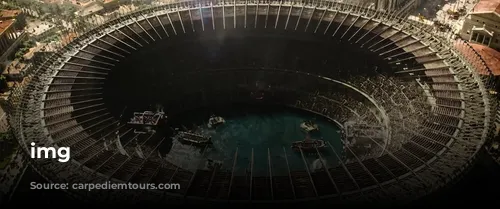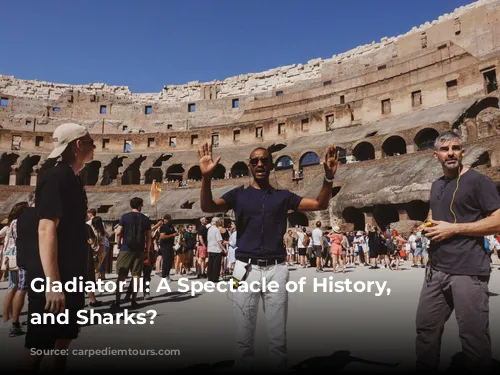The release of the Gladiator II trailer has stirred a renewed interest in Roman history. While the film promises thrilling action and a star-studded cast, some historians are raising eyebrows about the film’s portrayal of historical events.

Casting Doubt: Emperors and the Colosseum
The trailer features a gripping cast, with Denzel Washington taking on the role of Septimius Severus and Paul Mescal portraying Lucius Verus. However, the depiction of co-emperors Caracalla and Geta has sparked debate among historians. The film appears to reverse the actual historical events, where Caracalla murdered his brother Geta. Additionally, a scene depicting the Colosseum flooded with water has also raised questions.

Did the Romans Flood the Colosseum?
The trailer’s depiction of a naval battle within the Colosseum has ignited curiosity about whether the ancient Romans actually flooded the arena. While ancient sources offer conflicting accounts, we can glean insights from the available evidence.
Cassius Dio, a historian writing in the 3rd century CE, describes emperor Titus staging a naval battle within the Colosseum. However, his account is challenged by the fact that he wrote over a century after the events.
The poet Martial, a contemporary of the Colosseum’s inauguration, makes a more ambiguous reference to the arena being flooded. He writes, “If you are here from a distant land, a late spectator for whom this was the first day of the sacred show, let not the naval warfare deceive you with its ships, and the water like the sea: here but lately was land. You don’t believe it? Watch while the waters weary Mars. But a short while hence you will be saying: ‘Here but lately was sea’.”
The Colosseum could have potentially been flooded during its inaugural year (80 CE) before the construction of its vast underground system. Once this network of tunnels and storage rooms was built beneath the arena floor, staging water battles within the Colosseum would have become impossible.
The Logistics of Flooding the Colosseum
Reconstructing the exact method of flooding the Colosseum is impossible due to the substantial changes to the underground area. Flooding such a massive space rapidly would have been a considerable task even with modern technology. However, the Roman aqueduct system could have potentially provided the necessary water volume.
The Claudian Aqueduct alone could have discharged a significant amount of water per second. Based on the Colosseum’s dimensions, estimates suggest that the arena could have been filled in a few hours. This, however, seems to contradict Cassius Dio’s claim that the arena was filled “suddenly.” While the speed of filling the arena may have seemed remarkable for spectators, it’s important to consider the time frame within which it occurred.
The Amphitheatre of Verona: A Clue?
The well-preserved ampitheatre of Verona offers insights into the potential flooding mechanisms of the Colosseum. It features a basin connected to conduits that could have been used to fill and drain water. This suggests that the Colosseum may have had a similar system.
Naumachiae: The Roman Love for Naval Battles
If the Colosseum was indeed flooded, it was likely to accommodate naumachia – staged naval battles. The Romans had a passion for these spectacles, which were first introduced by Julius Caesar in 46 BC. Caesar ordered the construction of a vast artificial lake near the Tiber River for these battles.
Augustus, Caesar’s successor, also hosted naval battles, but in his own arena, which was completed in 2 BCE. Suetonius, the imperial biographer, suggests that Titus held his naval battles in the “old” Naumachia arena, which might have been mistakenly attributed to the Colosseum by Cassius Dio.
Sharks in the Colosseum?
The Gladiator II trailer also shows sharks or dolphins swimming around the Colosseum’s arena. This, of course, is a historical inaccuracy as most sharks cannot survive outside saltwater. However, it highlights the exotic nature of the Colosseum’s spectacles.
The Romans were known for showcasing exotic animals in their arena. Frescoes from Ostia Antica, Rome’s ancient port, reveal the city’s thriving animal trade. Lions, tigers, panthers, and even bears were used for bestiarii (animal shows) and venationes (wild animal hunts). Condemned criminals were also often thrown to the beasts in a gruesome practice called damnatio ad bestias.
While the film Gladiator II promises to be an entertaining spectacle, it’s important to remember that it is a work of fiction, and some elements of historical accuracy are bound to be sacrificed for dramatic effect.
